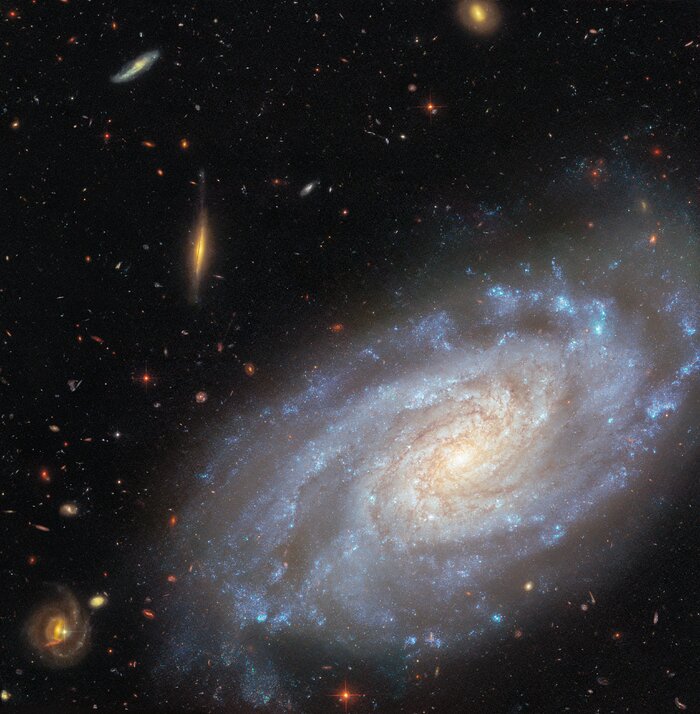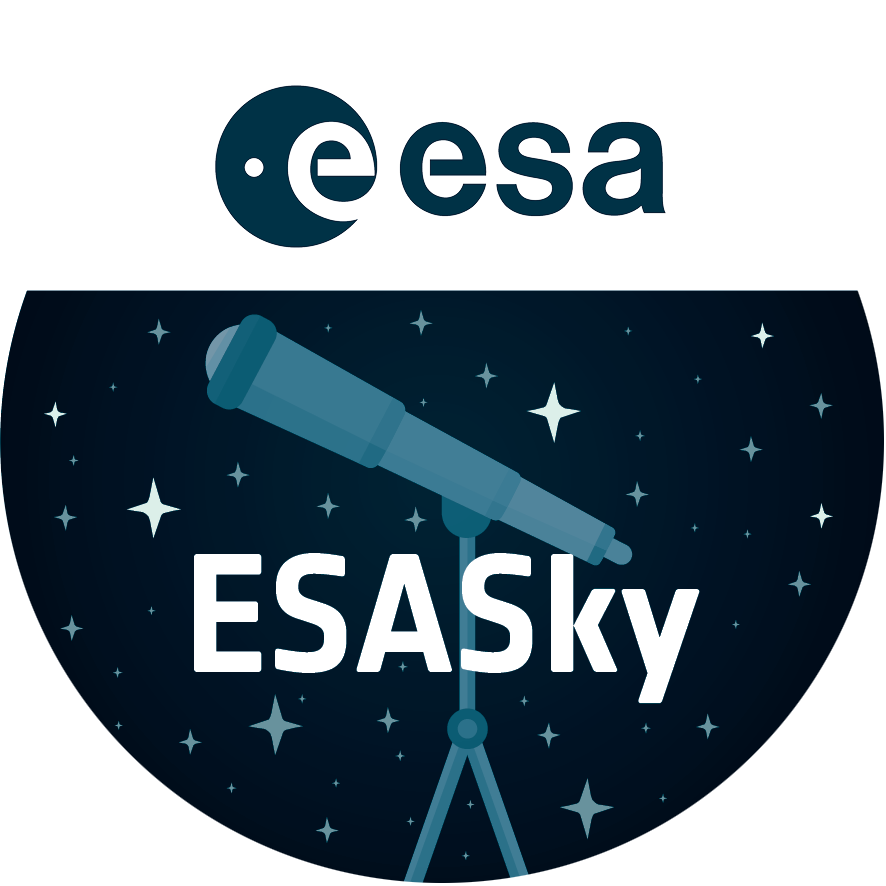NGC 3370 (wide view)
Today’s ESA/Hubble Picture of the Week features a galaxy that Hubble has captured multiple times over more than 20 years. The galaxy is called NGC 3370, and it is a spiral galaxy located nearly 90 million light-years away in the constellation Leo (The Lion).
What is it about this galaxy that makes it a popular target for researchers? NGC 3370 is home to two kinds of objects that astronomers prize for their usefulness in determining distances to faraway galaxies: Cepheid variable stars and Type Ia supernovae.
Cepheid variable stars change in both size and temperature as they pulsate. As a result, the luminosity of these stars varies over a period of days to months. It does so in a way that reveals something important: the more luminous a Cepheid variable star is, the more slowly it pulsates. By measuring how long a Cepheid variable’s brightness takes to complete one cycle, astronomers can determine how bright the star actually is. Paired with how bright the star appears from Earth, this information gives the distance to the star and its home galaxy.
Type Ia supernovae provide a way to measure distances in a single explosive burst rather than through regular brightness variations. Type Ia supernovae happen when the dead core of a star ignites in a sudden flare of nuclear fusion. These explosions peak at very similar luminosities, and much like for a Cepheid variable star, knowing the intrinsic brightness of a supernova explosion allows for its distance to be measured. Observations of Cepheid variable stars and Type Ia supernovae are both critical for precisely measuring how fast our Universe is expanding.
A previous Hubble image of NGC 3370 was released in 2003. The image released today zooms in on the galaxy, presenting a richly detailed view that incorporates wavelengths of light that were not included in the previous version. NGC 3370 is a member of the NGC 3370 group of galaxies along with other Hubble targets NGC 3447 and NGC 3455.
[Image Description: A spiral galaxy occupies most of the image. It is a slightly tilted disc of stars, yellow-white in the centre and blue in the outskirts, showing light from different stars in the galaxy. Its spiral arms curl outwards from the centre, speckled with blue star clusters. Dark reddish threads of dust swirl around the galaxy’s centre. The backdrop is four medium-sized and many small, distant galaxies on a black background.]
Links
Credit:ESA/Hubble & NASA, A. Riess, K. Noll
About the Image
| Id: | potw2542b |
|---|---|
| Type: | Observation |
| Release date: | 20 October 2025, 06:00 |
| Size: | 4244 x 4328 px |
About the Object
| Name: | NGC 3370 |
|---|---|
| Distance: | 90 million light years |
| Constellation: | Leo |
| Category: | Galaxies |
Image Formats
Classic Wallpapers
Coordinates
| Position (RA): | 10 47 6.73 |
|---|---|
| Position (Dec): | 17° 16' 42.51" |
| Field of view: | 3.28 x 3.34 arcminutes |
| Orientation: | North is 17.7° right of vertical |
Colours & filters
| Band | Wavelength | Telescope |
|---|---|---|
| Optical C | 390 nm |
Hubble Space Telescope
WFC3 |
| Optical B | 435 nm |
Hubble Space Telescope
ACS |
| Optical V | 555 nm |
Hubble Space Telescope
ACS |
| Optical V | 555 nm |
Hubble Space Telescope
WFC3 |
| Optical V | 606 nm |
Hubble Space Telescope
WFC3 |
| Optical I | 814 nm |
Hubble Space Telescope
WFC3 |
| Optical I | 814 nm |
Hubble Space Telescope
ACS |


